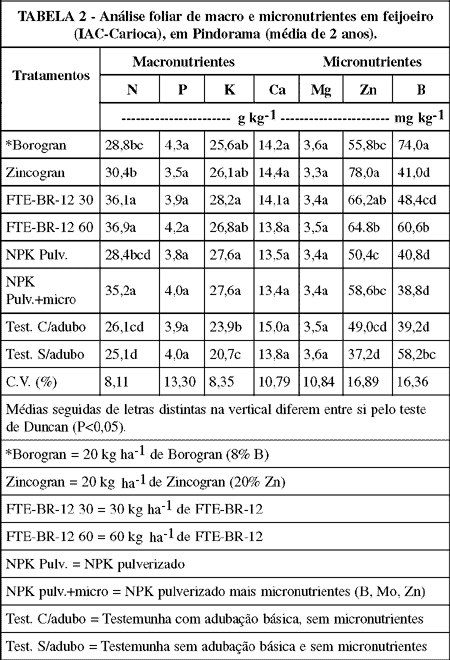An experiment was conducted at three localities, Ribeirão Preto (Latosolic B Terra Roxa), Votuporanga (Dark red latossol sandy phase) and Pindorama (Podzolic Lins-Marília), in the State of São Paulo, Brazil, to evaluate the response of micronutrients on irrigated dry beans during a two year period at Ribeirão Preto and Votuporanga (1990, 1991) and in the next two years in Pindorama. The experimental design consisted of completely randomized blocks, with five replications. Treatments were: check, 20 kg ha-1 of borogram (8% B); 20 kg ha-1 of zincogram (20% Zn); 30 kg ha-1 of FTE-BR-12 and 60 kg ha-1 of FTE-BR-12 all applied in the soil. The foliar application of macronutrients consisted of: N (1 kg ha-1 ), P (0,5 kg ha-1), K (1,4 kg ha-1), which were sprayed 15, 25 and 35 days after emergence. An additional treatment consisted of NPK plus micronutrients (Mo, B and Zn) which was applied during the same period. The results showed that the yield of irrigated dry beans in the winter can be increased using the mixture of micronutrients (30 kg ha-1 FTE-BR-12). The aplication of micronutrients including molibdeniun increase the concentration of nitrogen in the leaves of dry beans, in the case of low fertility soils, as in Pindorama.
Dry beans; Phaseolus vulgaris L.; micronutrients; irrigation



